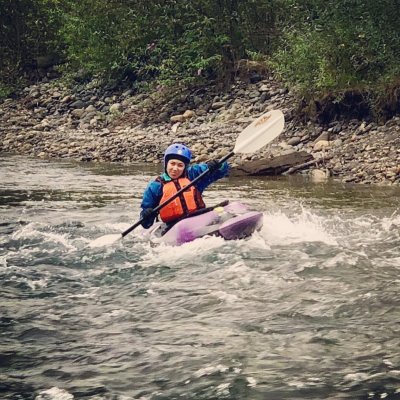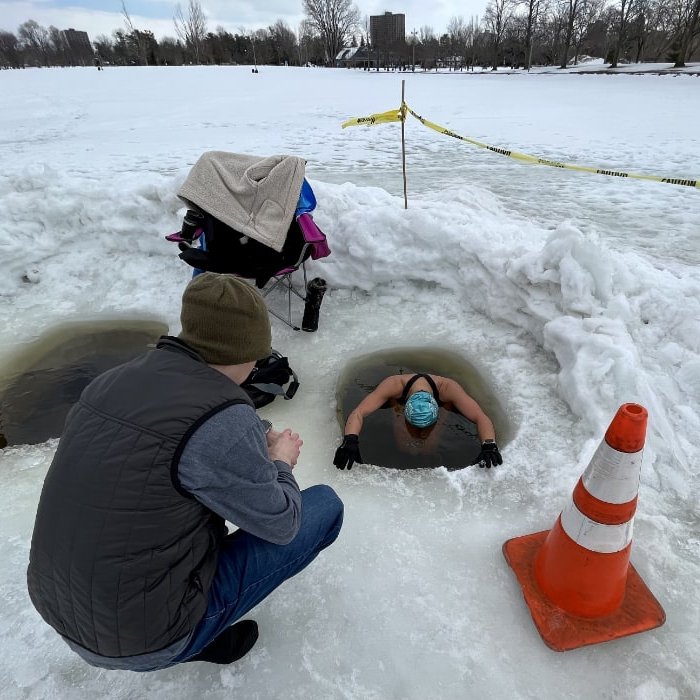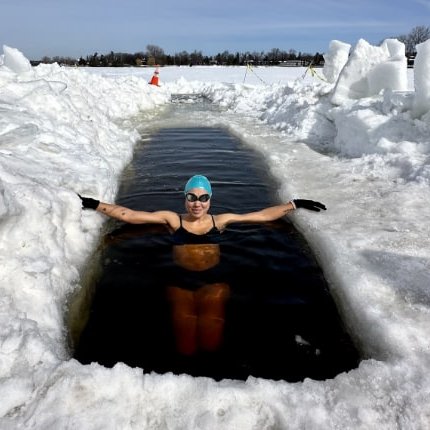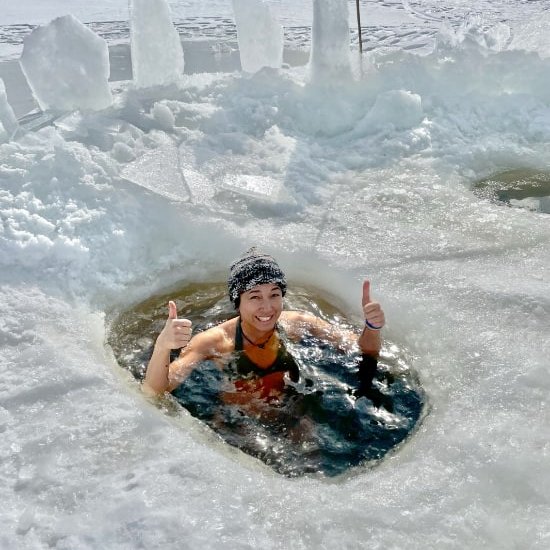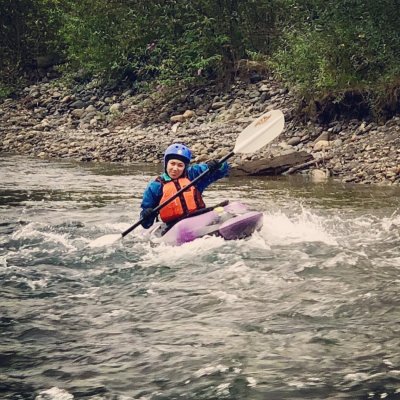
When I was younger water kayaking always seemed like something that crazy people did. Whitewater rafting on those huge inflatable boats with an experienced guide was more my speed. As I’ve gained more experience with different outdoor activities, I have become more confident in my ability to learn and try new things, knowing that all skills have progressions that almost anyone can do given a willingness to try. So this past weekend, Chris and I headed out to Chilliwack to give it a try. Having already taken the level 1 Paddle Canada Sea Kayaking course, an intro course in whitewater kayaking with Purple Hayes School of Kayaking in Chilliwack seemed like a fun and excited way to expand our knowledge base with these boats.
Day 1 - Intro to Kayaking: Learning the Basic Skills
The first day started off getting us sized for all our gear. There was a fairly big group of us, so it did take a bit of time. The whitewater kayaks are designed very differently from the sea kayaks I am used to, being shorter and wider so as to make them more maneuverable on the water. The difference in design was immediately apparent, which we were warned about, as soon as we started paddling to our first location. For each stroke, you feel your trajectory immediately change. If you’re not careful to keep track of where you’re aiming, you can end up completely off course, even spinning in a circle. Our instructor told us to focus our eyes on our destination and don’t worry too much about which way your kayak is pointing. It will change bearing with each stroke so as long as you focus on your goal, your body will adjust the pull of the stroke to compensate. You also have to hold the paddle quite a bit wider than I’m used to on a sea kayak, allowing for more aggressive pulls when needed. We learned all the basic skills we needed to keep us safe on white water on the calm waters of Cultus lake, including basic paddling strokes, eddy turns, wet exits, t-rescues and kayak rolls. Our instructors, Kay-uwe and his assistant Sophia, were both patient, encouraging and competent at working us through the progressions for each skill. They also taught us to paddle through rough water. They simulated this experience by launching us off a dock tip first, as you can see in the image below. The idea is that if you keep paddling hard when the bow of your kayak dips under the water, you take control and push through it rather than get swallowed up and tossed by it. The photo below shows me during my launch.

Learning to Roll a Kayak
Rolling a kayak to recover from being flipped is challenging, but I’m happy that I was able to pull it off before the end of the day. Unfortunately for us (but fortunately for all the forests that were on fire), it was a cold, rainy day. Spending more time going in and out of the water was a bit rough and I was solidly shivering when I got out, but man did we appreciate a chowing down on the bricks of cheese we picked up at the local Dutch cheese shop afterward. (I will most assuredly be doing a review of their offerings some time in the future, cheese fiend that I am.) I recommend having something hot to drink in a thermos and a warm-up coat of some kind for the lunch breaks. It definitely helped raise my temperature and spirits after getting chilled.
Day 2 - Putting the Whitewater Kayak Skills into Practice
We headed to an entry point on the Vedder River for the start of day 2. Our instructor started off by having us practice our eddy turns on actual eddies in the river, a gentle one to start with, emphasizing moving across the eddy line on a 45 degree angle while lifting the upstream knee to meet the current and keep control throughout the turn. We then moved downstream to keep practicing eddy turns on more and more challenging currents and also had another go at practicing our kayak rolls over the course of the morning.
Learning to “Surf” Whitewater
After lunch, we relocated further upstream to more challenging currents where were got to try our hand at “surfing” on the river. Much like ocean surfing, you basically find a “wave” or more accurately a static wave in the current then you kayak up to it, entering it on just the right angle at just the right speed so that you surf it. Rather than traveling with the wave as you would on the ocean, the wave stays put, as do you, while you sway and turn and do various tricks. I wish I could say that I was as smooth as that. At most, I was able to enter a wave momentarily before losing my angle and being thrust out of it by the current. My instructor, on the other hand, could have stayed in the wave forever, doing various maneouvres. It was quite something to see and definitely something I want to be able to do at some point.
Hitting Obstacles While Whitewater Kayaking
The water of the river was quite low since it was toward the end of the summer, so there were quite a few more rocks to contend with as we travelled down river. We were given the advice on hitting obstacles: “If you’re going to hit it, hug it.” Rather than letting yourself be destabilized on impact, you use your arms to hold it or push off it so that you keep upright and moving. This advice saved me a few times. Other times, I was simply able to bump off and paddle hard with a sweep turn to clear a rock, a skill that saved my ass when I bumped into a large rock particularly hard in a faster flowing current. Another time, I nearly toppled when the current overtook the side of my kayak, but using my hips and legs, I was able to take back control.
Pushing Your Limits
I can’t say that I maintained a perfect record on that second day though. Where’s the fun in that anyway? Toward the end of the second half of the second day, we were taking turns surfing in a faster flowing part of the river. As the current pushed me out of the wave, I lost stability and rolled in my kayak. After my first attempt to roll myself back up, I plunged back in. I stayed calm and went back to home position to try again. This is when my breath hold from free diving skills comes in handy. Before I got the chance to try again, I felt myself pulled up by my instructor.
“It’s the end of the day and I know you’re tired,” he explained as he got me back upright. Maybe I would have gotten it, but as an instructor I understand why he doesn’t want to take chances. Better to help me out than take a chance of a student having a panicked moment that keeps them from wanting to do it again. This wasn’t the case with me, but it makes total sense. I’m glad he at least let me make the attempt on my own in the first place.
My Overall Experience
Going in, I wondered how much different taking an intro course for whitewater kayaking would be compared to the intro course for sea kayaking that I took last year. The biggest difference was that there was a greater emphasis on wet exits to the kayak when rolled in the sea kayaking course where as in the whitewater course, they placed stronger emphasis on t-rescues where you stay in the boat and on rolling as a recovery method. It makes sense. In a whitewater river, it’s safest to get back to upright without exiting because you don’t necessarily know what obstacles are coming downriver. They also emphasized aspects of water flow, tides for sea kayaking and eddy lines for whitewater. The only problem I have now is that I just bought my Advanced Elements Elite Expedition inflatable kayak a couple of months ago and now I want to buy a whitewater/surfing kayak too. There are just too many fun things to do in the outdoors! What’s a woman to do? I should just give all my money to Skyview Outdoors, my favourite local outdoor store, right now and be done with it. ;)
